SUBFAMILY MYRMICINAE - Genus Meranoplus
| The Ants of
Africa SUBFAMILY MYRMICINAE - Genus Meranoplus |
|
| Contents - Myrmicinae - MYRMICINAE Introduction |
In Tribe MERANOPLINI.
Diagnostic Features - Antennae 9-segmented with a 3-segmented club; antennal scrobes well developed and deep. Eyes situated towards the posterior of the ventral border of the scrobes. Promesonotum fused, strongly margined all around, projecting posteriorly as a shelf which overhangs the near vertical propodeum. Posterior margin of shelf with a number of teeth or spines. Propodeum unarmed or bidentate or bispinose. Petiole and postpetiole scale-like. All are brown to dark brown, with all dorsal surfaces having abundant, long, soft hairs giving the ants a furry appearance.
Arnold (1917) gave a transcription of Smith (1854 - unavailable in
HNS) and a key to South African forms; these are at ![]() . Botlon's (1981a) revsion is at
. Botlon's (1981a) revsion is at ![]() .
.
Key to the workers of African species (adapted from Bolton, 1981a):
| 1 | Apex of petiole with a pair of spines | 2 |
| -- | Apex of petiole unarmed | 4 |
| 2 |  Dorsal
surfaces with no more than short appressed hairs; TL 2.5-3.4 mm;
uniform pale yellow, gaster may be darker Dorsal
surfaces with no more than short appressed hairs; TL 2.5-3.4 mm;
uniform pale yellow, gaster may be darker |
. |
| . |  |
southern east Africa - glaber |
| -- | 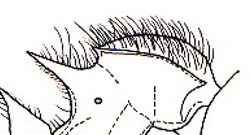 Dorsal
surfaces with conspicuous dense covering of long hairs Dorsal
surfaces with conspicuous dense covering of long hairs |
3 |
| 3 | 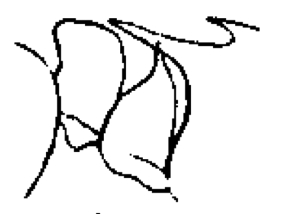 Postpetiole low
and nodiform, with abundant soft hairs on
dorsum; petiole with short spines; TL 2.8-3.6 mm; mid-brown with darker
gaster to uniform dark brown Postpetiole low
and nodiform, with abundant soft hairs on
dorsum; petiole with short spines; TL 2.8-3.6 mm; mid-brown with darker
gaster to uniform dark brown |
. |
| . |  |
southern east Africa - spininodis |
| -- | 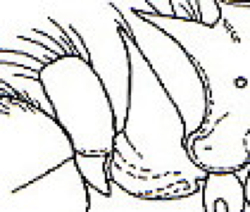 Postpetiole
high and narrow with few erect hairs; petiole with long spines; TL
2.8-3.2 mm; yellowish-brown, gaster slightly darker Postpetiole
high and narrow with few erect hairs; petiole with long spines; TL
2.8-3.2 mm; yellowish-brown, gaster slightly darker |
. |
| . |  |
Zimbabwe - sthenus |
| 4 | 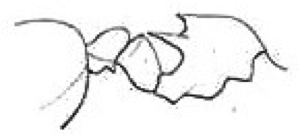 Postpetiole in
profile broad and nodiform; long propodeal
spines which project beyond mesonotal margin in dorsal view Postpetiole in
profile broad and nodiform; long propodeal
spines which project beyond mesonotal margin in dorsal view |
5 |
| -- |  Postpetiole in
profile squamiform or very strongly
antero-posteriorly compressed Postpetiole in
profile squamiform or very strongly
antero-posteriorly compressed |
6 |
| 5 | 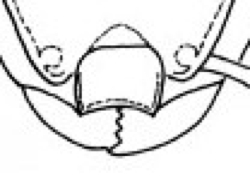 Mandibles
with four teeth; anterior of clypeus with a prominence or denticle on
each corner; TL 2.8-4.3 mm; medium to dark brown, gaster usually
darker, sometimes with reddish tint Mandibles
with four teeth; anterior of clypeus with a prominence or denticle on
each corner; TL 2.8-4.3 mm; medium to dark brown, gaster usually
darker, sometimes with reddish tint |
. |
| . | 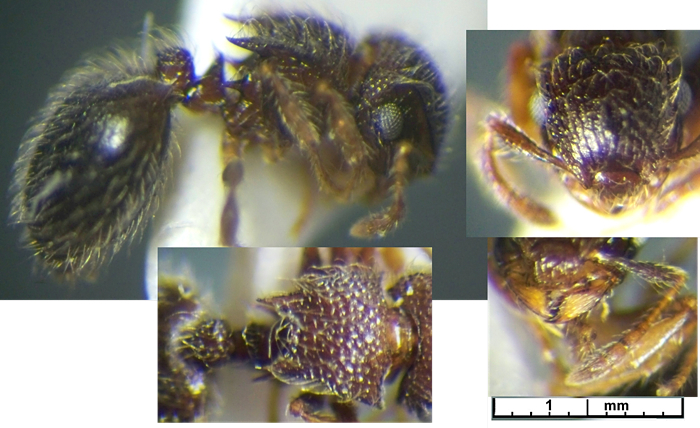 . . |
Senegal, Ghana (savannah) plus east and southern Africa - magrettii |
| -- |  Mandibles with five teeth; anterior of clypeus
without lateral prominences; TL 3.2-4.9mm; uniform medium to
blackish-brown Mandibles with five teeth; anterior of clypeus
without lateral prominences; TL 3.2-4.9mm; uniform medium to
blackish-brown |
. |
| . |  . . |
southern Africa - peringueyi |
| 6 | 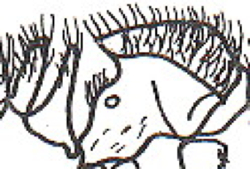 Propodeum
without spines; TL 2.7-4.0 mm; mid to dark brown, gaster often darker Propodeum
without spines; TL 2.7-4.0 mm; mid to dark brown, gaster often darker |
. |
| . | 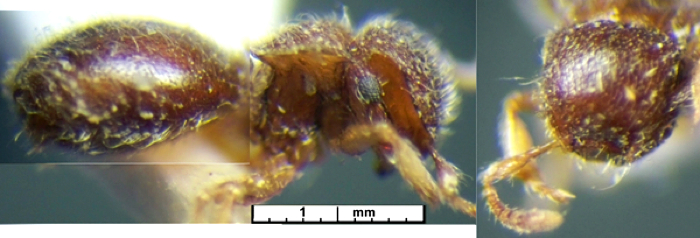 |
Pan-African - inermis |
| -- | 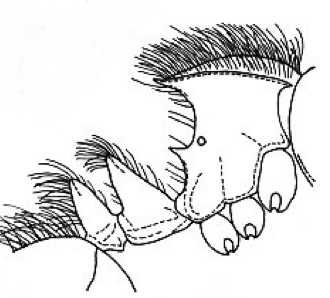 Propodeum
armed with a pair of short spines Propodeum
armed with a pair of short spines |
7 |
| 7 |  Posterior
margin of mesonotum with 4-6 opaque cuticular projections; spaces
between with translucent lamellae; postpetiole dorsum a crest without
rugae; TL 2.8-3.8 mm; mid to dark brown, gaster often darker Posterior
margin of mesonotum with 4-6 opaque cuticular projections; spaces
between with translucent lamellae; postpetiole dorsum a crest without
rugae; TL 2.8-3.8 mm; mid to dark brown, gaster often darker |
. |
| . | 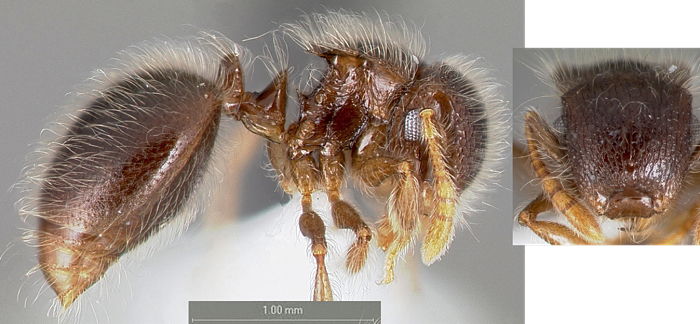 |
Pan-African - nanus |
| -- | 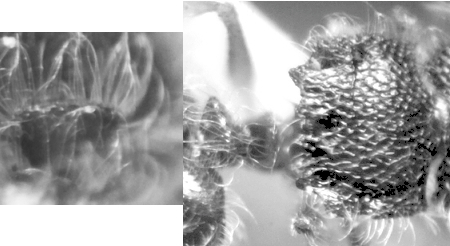 Posterior
margin of mesonotum with broad shelf-like lamella, may be projected
into 2-4 triangular teeth; postpetiole dorsum narrow but flattened,
with rugae; TL 2.8-3.8 mm; uniform mid to dark brown Posterior
margin of mesonotum with broad shelf-like lamella, may be projected
into 2-4 triangular teeth; postpetiole dorsum narrow but flattened,
with rugae; TL 2.8-3.8 mm; uniform mid to dark brown |
. |
| -- | 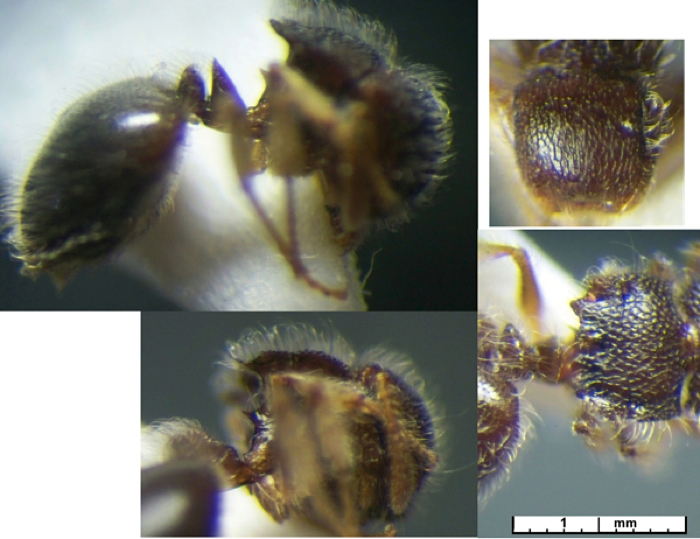 |
Pan-African - clypeatus |
| MYRMICINAE Introduction |
© 2007, 2011, 2013 - Brian Taylor CBiol FSB FRES 11, Grazingfield, Wilford, Nottingham, NG11 7FN, U.K. |
href="meranoplus.htm"